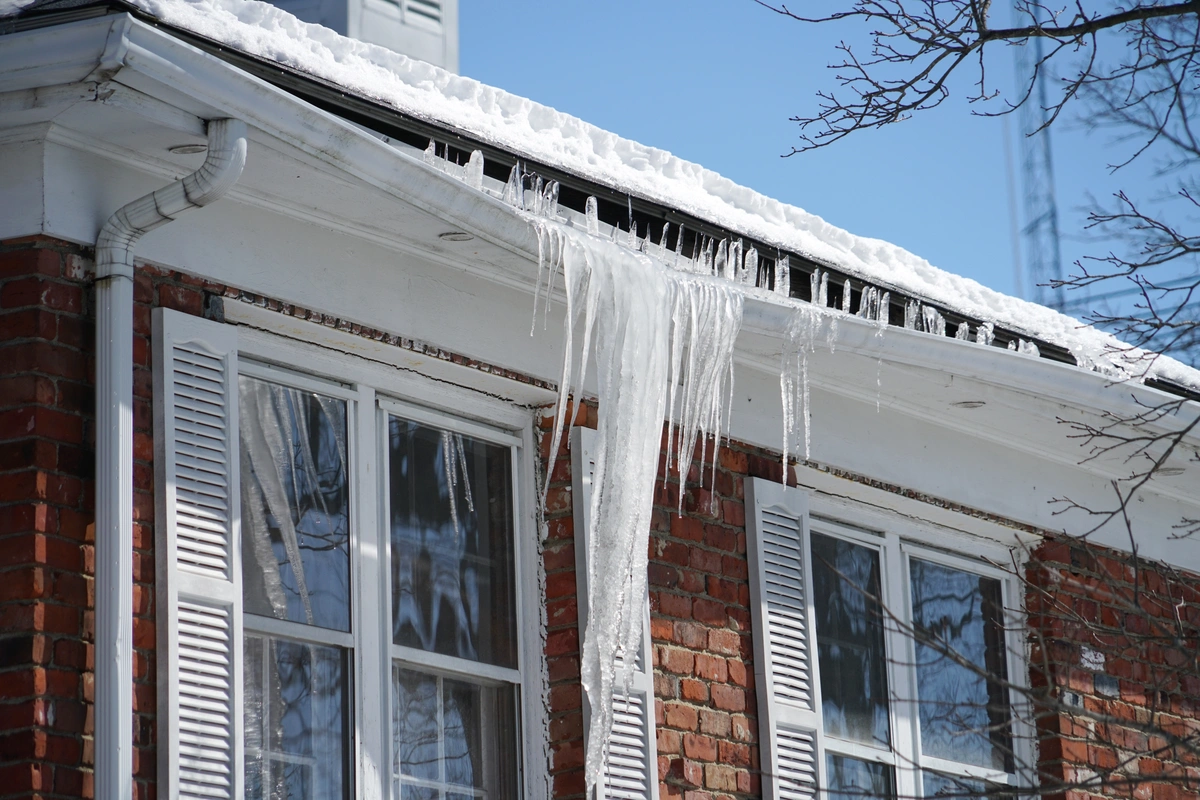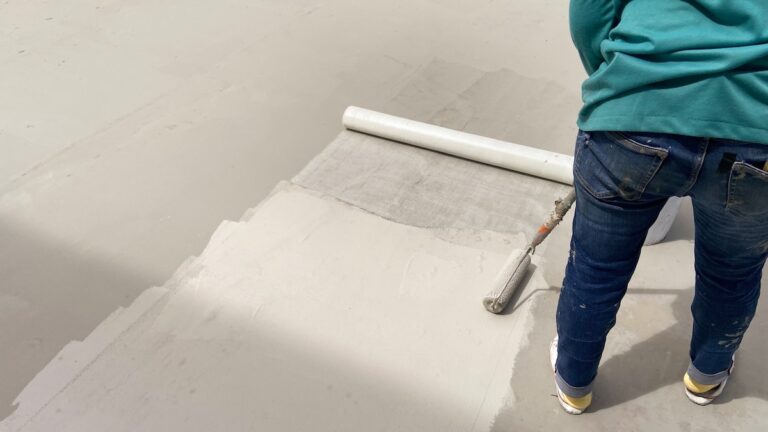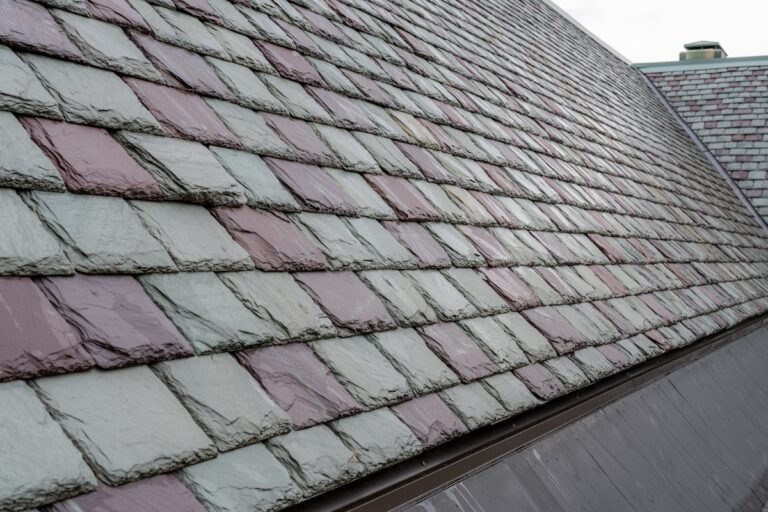Icicles may look pretty, but they can actually cause a lot of damage to your home. This is because where there are icicles, there are ice dams — and ice dams are known for tearing up gutters, loosening shingles, and causing water to back up in the home.
In this article, we’ll cover everything you need to know about ice dam removal and prevention to ensure that your home stays safe this winter.
What Exactly Is an Ice Dam?
An ice dam is a ridge or layer of ice that forms right at the edge of a roof. Ice dams have a tendency to prevent melting snow — which turns into water — from draining off the roof, causing water to back up and potentially leak into your home.
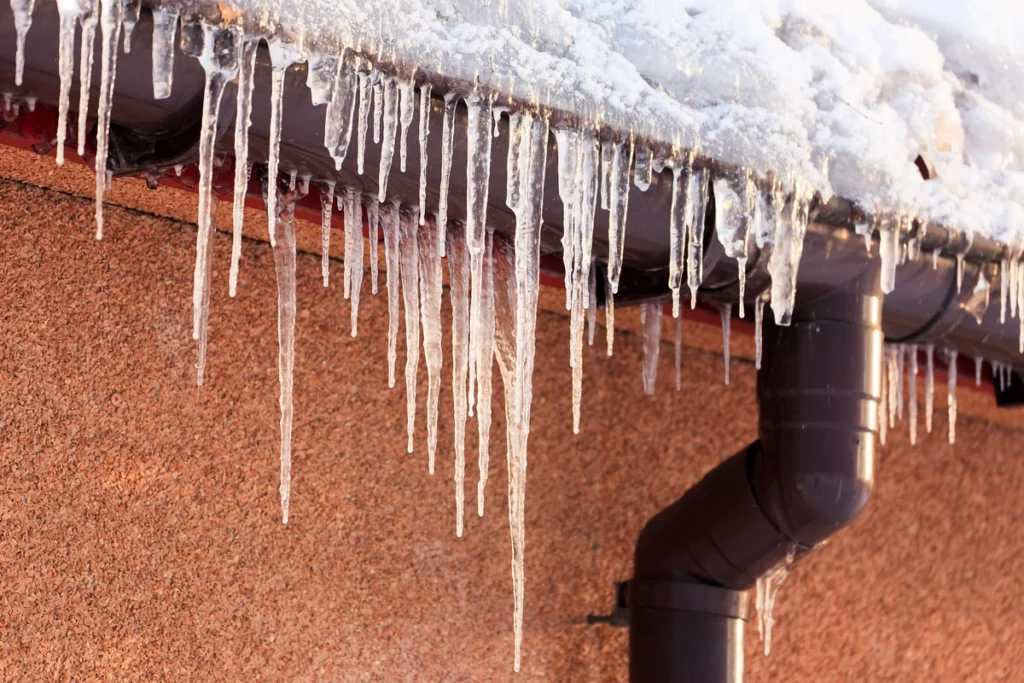
Ice dams form primarily due to a combination of:
- Heat loss from the home
- Snow coverage on the roof
- Below-freezing outdoor temperatures
- The roof’s top surface layer having a temperature just above 32 degrees Fahrenheit
- The roof’s lower surface layer (the eaves) falling below 32 degrees Fahrenheit
Over a sustained period of time, this combination of variables will cause the snowy layer to melt from the top and refreeze once it hits the lower layer. The longer this goes on, the greater the ice dam will be, and the backed-up water will find its way into any cracks or openings on the roof.
The Dangers of Ice Dams
It may be tempting to wait for the ice dams to melt, but it’s the last thing you should do as a homeowner — especially if your roof is a little older. Ice dams come with inherent risks, including:
- Gutter damage. As ice dams grow, they become heavier, putting unnecessary weight on your gutter system. As they melt, the flow of water will add more force to that unnecessary weight, and they can end up ripping your gutters right off your roof.
- Shingle damage. As the water becomes backed up, it can refreeze after penetrating the areas in between shingles. As water freezes, it also expands, which can loosen up your shingles and cause them to break.
- Water damage. As the backed-up water seeps into your roofing system, it can end up penetrating the walls and ceilings inside of your home. Leaks can easily cause structural damage to your home, not to mention damage to your interior spaces.
- Mold growth. Excess moisture seeping into your home will always lead to mold and mildew, especially if the water damage isn’t discovered or left neglected for a long period of time. Mold is a health hazard for both your home and your family.
- Accidents and injuries. The large icicles that form over your roof eaves from ice dams are also dangerous. They can fall and cause injuries, or as they melt, the water collecting on the ground can freeze, which will inevitably lead to slips and falls.
Ice Dam Removal Tips and Tricks
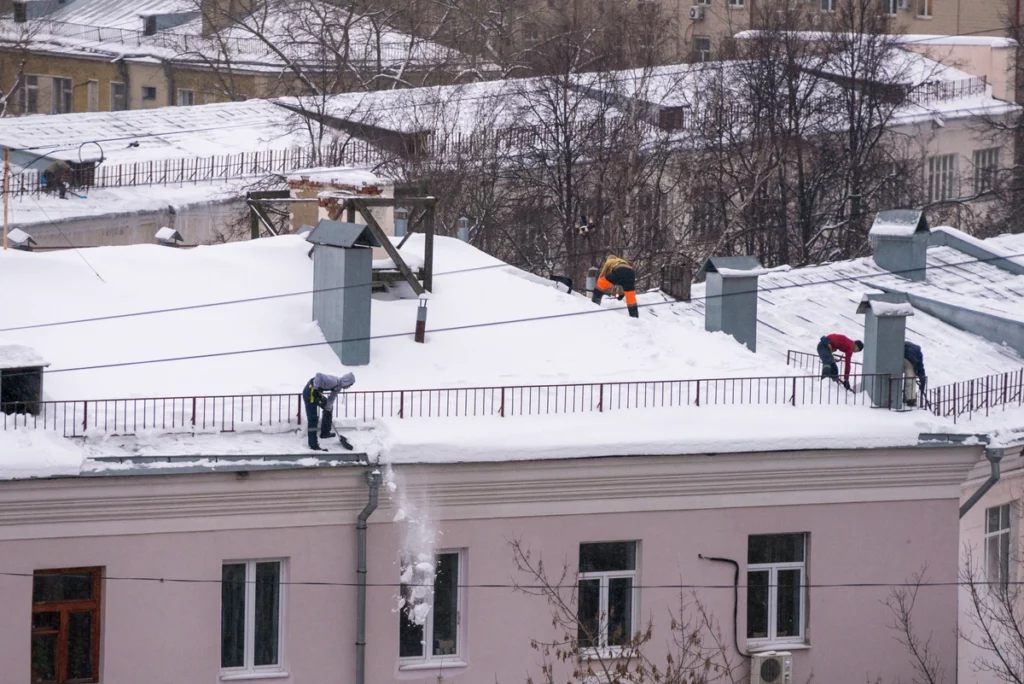
As a homeowner, there are several ways you can get rid of ice dams on your own before they turn into ice damage — as long as you’re careful!
Here are some of the safest ice dam removal methods to try:
Calcium Chloride
You can use the same calcium chloride products on your roof as you use to melt the ice on your driveway. However, you don’t want to just sprinkle it all over your roof. Instead, you want to:
- Filler several tube socks or pantyhose (about 15) with the calcium chloride granules and tie off the open ends
- Position the socks or pantyhose vertically over the ice dam, allowing the salt vessels to hand an inch or two over your roof eaves
- This will help to melt the ice while creating a tube-like channel for the water to safely run off
Note: Do not use rock salt, as it will damage your shingles and kill your landscaping!
A Rake
If you have a long-handled aluminum or plastic lightweight roof rake, you can brush off excess snow safely from the ground. This can help to quickly change your roof’s exterior temperature without damaging your shingles.
It may be tempting to try and break up the actual ice dams with your rake However, it’s not recommended. You can end up severely damaging your roof, and as large broken sheets start to fall, other exterior components of your home will be at risk for damage as well.
Hot Water
If you’re able to safely get hot water up to your roof, running it over the ice dam — slowly — will melt it and allow the water to start draining through your gutter system.
Of course, this may take a while as you would have to continuously run the hot water until the ice dam is completely gone to ensure you’re not adding excess water that will just freeze up momentarily to the problem.
Ice Dam Prevention
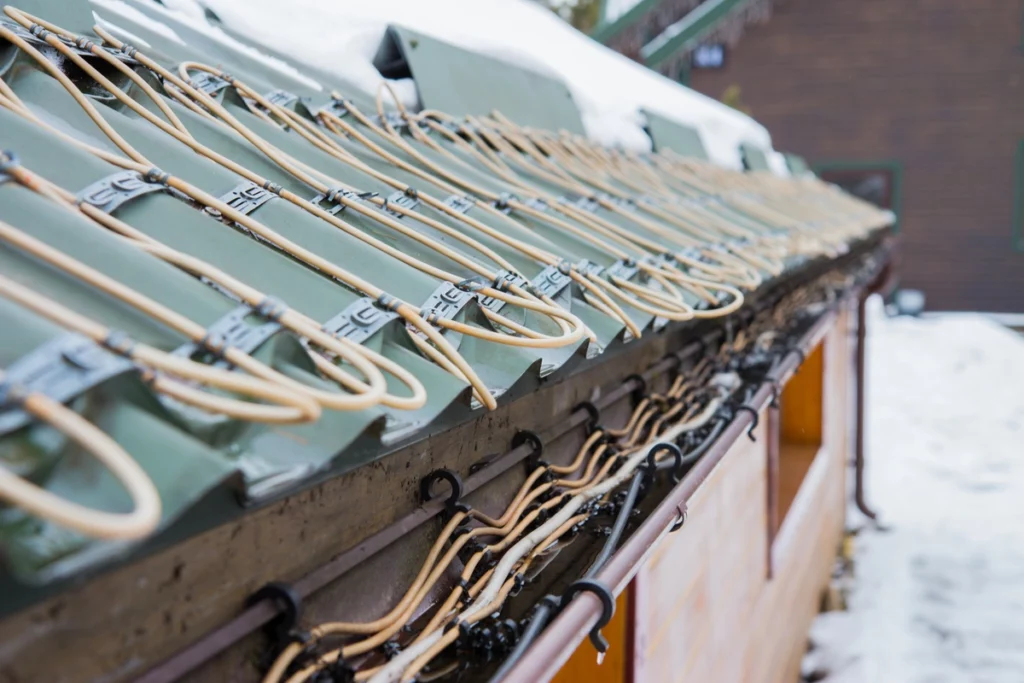
The best form of ice dam removal is preventing ice dams from forming in the first place. Ice dam prevention is based on one simple principle, and that’s maintaining the same temperature among your roofing system and eaves.
Here’s what you can do to help prevent ice dams:
- Properly ventilate your eaves and roof ridge using continuous soffit vents to circulate cold are beneath your entire roof
- Seal your attic hatch with weather-stripped caps to prevent heat from escaping
- Make sure that the ducts throughout your home all lead outdoors through either your roof or walls — never the soffit vents — for an adequate exhaust process
- Add insulation to your attic floor, walls, and ceiling to help maintain the rising heat
- Install self-regulating heat cables on your roof planes to further regulate your roof’s temperature and prevent ice from forming
When to Consult a Professional for Ice Dams
Ice dams are more than just a winter inconvenience—they can lead to serious damage if not addressed properly. While some minor ice dam cases can be managed by homeowners, there are situations where consulting a professional is essential for safety and effective resolution.
Large or Persistent Ice Dams
If you’re dealing with large ice dams or those that keep forming despite attempts to remove them, it’s time to call in a pro. Persistent ice dams often indicate underlying issues, such as poor insulation, inadequate ventilation, or roof structure problems. A professional can not only remove the ice dam safely but also diagnose and address the root cause to prevent future occurrences.
Water Leaks or Interior Damage
One of the key warning signs that an ice dam requires immediate professional attention is water leakage inside your home. If you notice water stains on your ceilings or walls, dripping water, or peeling paint, it’s a clear sign that the ice dam is damaging your roof and potentially your home’s interior. Professionals have the tools and expertise to stop the damage and minimize repair costs.
Safety Concerns
Removing an ice dam can be dangerous, especially if it involves climbing up on a slippery, icy roof or using improper tools. Attempting to chip away at ice with shovels or chisels can harm your roof or gutters and put your safety at risk. Professionals use specialized equipment, such as steamers, to safely and effectively break down ice without causing damage.
When in doubt, it’s always better to consult a professional for ice dams. Not only will you protect your home and your safety, but you’ll also gain peace of mind knowing the issue is being handled correctly.
Leave the Ice Dam Removal to Us!
It’s not recommended to handle roofing problems on your own in favorable conditions, so the last thing any reputable roofer will tell you is to take care of ice dam formation on your own. So, if you have an ice dam problem, the first thing you should do is call a trusted roofing company to take care of it.
At Johnson Restoration, safely removing ice dams is just one of our many areas of expertise. Get in touch with us today to learn more about how we can help you with ice dam removal and prevention before it’s too late.
